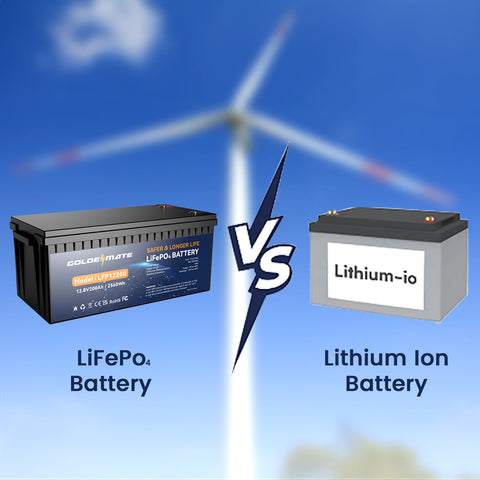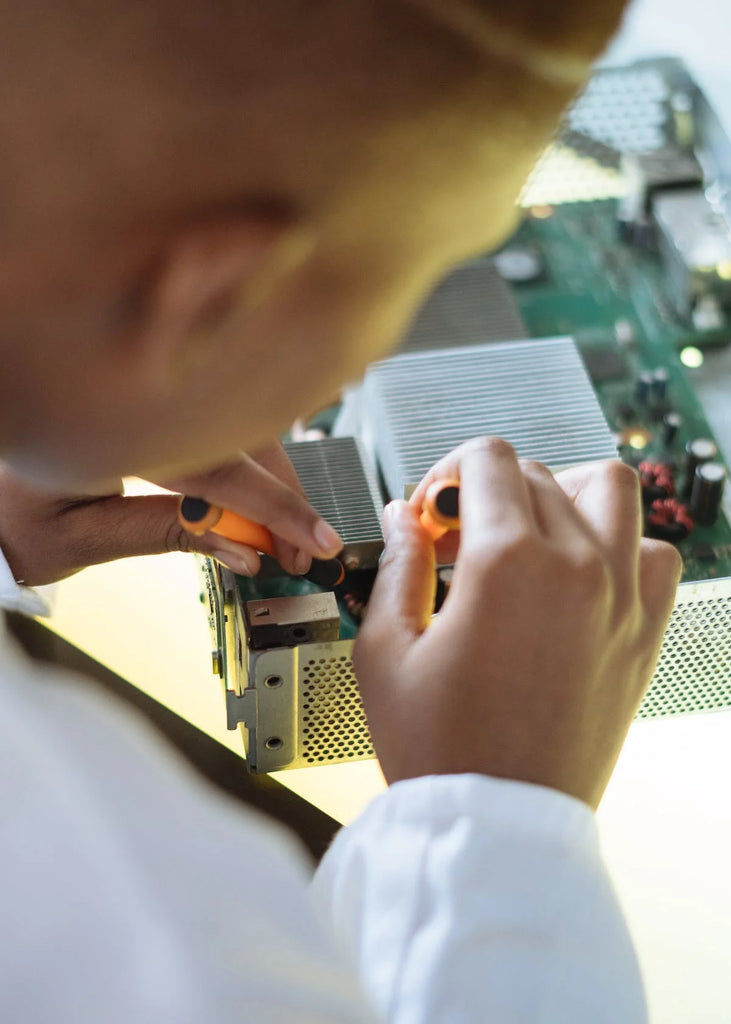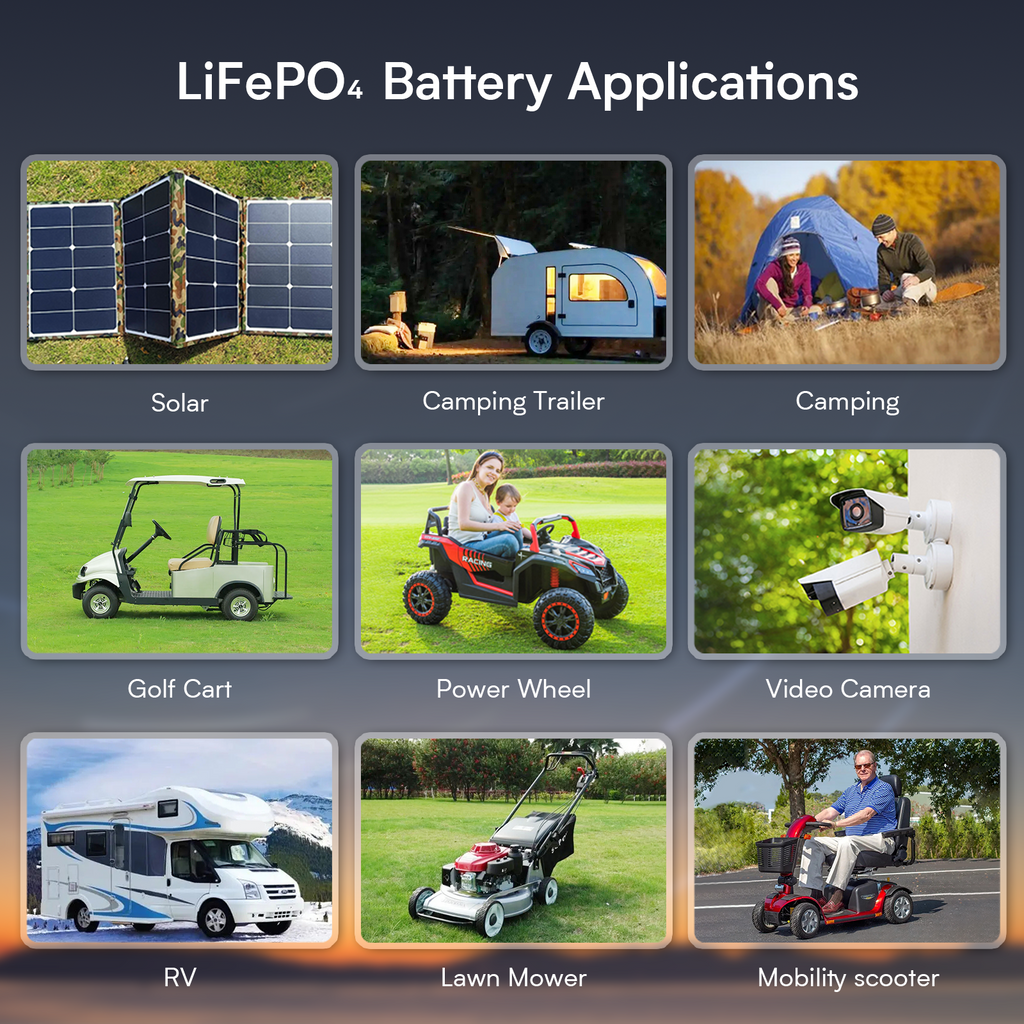
Finding a new set of batteries can be complicated. All our home components, from the simplest as a smartphone or portable power tools to electric vehicles, require a battery.
This battery each device needs holds a significant amount of energy as well. Additionally, we look for a product that is also lightweight and safer to use.
Lithium batteries offer all these benefits, from small devices such as smartphones to large ones such as an RV and medical equipment. But what are the main differences between LiFePO4 and Lithium-ion?
Chemistry

As their name states, both batteries fall into the class of lithium batteries. Hence, the construction of these batteries has a lot of similarities. We will also talk about the charge and discharge rates.
LiFePO4
Lithium iron phosphate batteries have a cathode of iron phosphate and an anode of graphite.
A single lithium- iron battery cell creates a voltage between 3.2V to 3.3V. Consequently, battery manufacturers use 4 cells in series to make up a LiFePO4 battery pack.
It is relevant to notice that lithium iron phosphate cells have greater cell density than lead acid but less cell density than lithium iron.
The capacity of a battery is rated at 1C. LiFePO4 batteries, the charge rate is 1C, and the discharge rate of 1-25C
Lithium-ion
Lithium-ion consists of two chemistries for the cathode, lithium manganese oxide or lithium cobalt dioxide. This battery has graphite as the anode.
The nominal voltage of individual lithium-ion cells is 3.6V or 3.7V. Usually, 3 cells in a series are used to make up a battery pack. As mentioned above, fewer cells are used because the density is higher than LiFePO4.
The charge rate of lithium-ion batteries is from 0.7C up to 1.0C. The discharge rate is 1C.
Life cycle

As we have already mentioned, the energy density is significantly different from one another. This is also reflected in their life cycle.
LiFePO4
Lithium iron phosphate batteries have a lifecycle of 1,000 - 10,000 cycles. Each cycle is a full discharge and charge of the battery. This translates to a period of over seven years.
Plus, these batteries can handle high temperatures with little degradation. It is ideal for embedded systems or devices that need to run for long periods.
Lithium-ion
Lithium-ion batteries have a higher energy density, making them more unstable. High operating temperatures are risky environments for lithium-ion batteries.
They have a life cycle of 500 - 1,000 since this is affected by the operating temperature of the electronics or working components. This translates to a period of 2 to 3 years.
Safety features

Handling batteries require various safety procedures. However, manufacturers are considering their options regarding LiFePO4 or Lithium-ion batteries.
LiFePO4
When it comes to safety features, the only option is LiFePO4. This is because of the following reasons:
- Excellent thermal and chemical stability
- Stays cool in high temperatures
- If mishandled during rapid changes, discharges, or short circuit issues, it won´t burn as it is incombustible.
- Does not experiment with thermal runaway.
Lithium-ion
The chemistry of lithium-ion does not have the same advantages as LiFePO4´s.
- Higher energy density makes it an unstable battery,
- Heats up faster during charging and can experience thermal runaway
- Lithium cobalt dioxide is considered hazardous material.
- Higher possibility of starting a fire if mishandled.
Environmental Impact

Global warming is an issue that is making companies and users drive towards environmentally safe products and their processes. Batteries are known to be the least environmentally products, but nowadays, this has changed.
LiFePO4
A feature that always comes up with these batteries is the much longer lifespan. They require far less often replacement, leading to fewer batteries in landfills.
They do not contain harmful metals. They are non-contaminating, non-toxic, and less costly than other lithium-ion and Lithium polymer batteries. This is so because copper, iron, and graphite are materials commonly available.
Lithium-ion
Lithium-ion batteries release a large number of toxic gases. This occurs mainly at high temperatures. As their lifespan is shorter, they are replaced more often, leading to increased waste.
Long-Term Storage Benefits
More often than not, we purchase a battery that is not used frequently. Storing unused batteries can also lead to loss of charge over long periods.
LiFePO4
This battery has good long-term storage benefits. It can be stored for over 350 days. The self-discharge rate is about 3% per month. As a result, after 30 days, the battery will go from 100% to 97%.
This is due to its chemical stability and longer charge retention.
Lithium-ion
Similar to the LiFePO4 battery, lithium-ion also offers good long-term storage benefits. However, it is up to 300 days. The self-discharge rate is about 5% per month. This means that after 30 days of storage, the battery will go from 100% to 95%.
Applications
Not all devices require the same battery type. So, when deciding on a battery, you should ascertain if the particular battery type would suit your required applications.
LiFePO4

Due to their low energy density, these batteries are more suitable for electric vehicles, solar batteries, medical appliances, lawn machines, RVs, and many more.
Lithium-ion
Contrary to LiFePO4, Lithium-ion is more suitable for appliances with limitations on the battery size. For instance, smartphones, electronic cigarettes, or other small rechargeable devices.
Warranty
When it comes to investment, one factor to consider is warranty. The latter guarantees a return and the lifespan and quality of the battery you purchase.
LiFePO4
Lithium iron phosphate comes with a warranty period of 2 years. You can check this information here. Additionally, at Goldenmate, we offer a 30-day return policy.
Lithium-ion
Lithium-ion batteries have a lifespan of not longer than 2 years. As a result the warranty will not be longer than 6 months or 1 year.
Putting everything together
Both batteries share some characteristics. The best power source for high energy use. Long shelf life and a continuous source of power.
With the extended information provided here plus, you can decide between LiFePO4 very easily.
If you would like to read more about LiFePO4 batteries, you can click here.


















